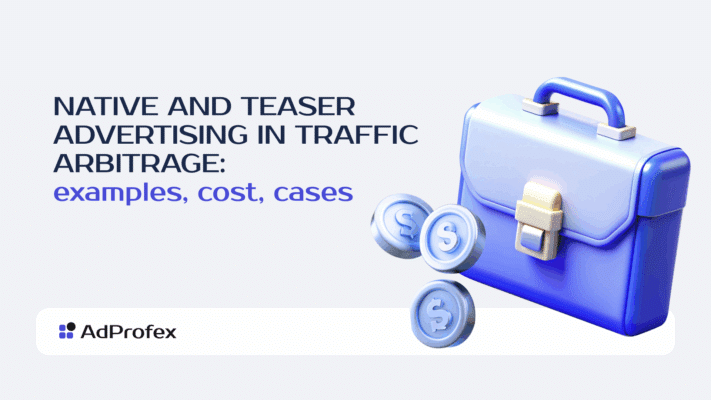Introduction
Native and teaser advertising are popular advertising formats actively used by webmasters from different niches. Native advertising is disguised as content relevant to the user’s interests and gently, unobtrusively leads them to purchase. Teaser advertising is more aggressive. It does not mimic the surrounding content (as native advertising does); its task is to play on curiosity, hook the user with any trigger, and make them click. Both formats perform well, but it is necessary to know when and where they are appropriate to use in order to make a profit. We will talk about how native and teaser advertising works, as well as figure out how to choose native and teaser networks for traffic arbitrage.
1.1. Definition, features
What is native advertising? It is a format that seamlessly integrates into the context of a platform. Native advertising looks like a natural part of the content. This effect is achieved by ad networks through the placement of widgets on websites. A widget or ad block placed on a site displays ads relevant to the rest of the content, thus achieving the native effect.
What is teaser advertising? It is a format based on intrigue and understatement. The main goal of teasers is to spark interest, arouse curiosity, and encourage the user to click on the ad. This approach is often accompanied by striking headlines, provocative images, or elements of mystery. Teasers are also embedded in site content using widgets, but they do not disguise themselves as the rest of the content.
1.2. Types of native advertising
- Sponsored content. These are materials created with brand support and corresponding to the platform’s theme. For example, an article or video on a popular website mentioning a product.
- Recommended content. These blocks are often found under articles or videos. They are designed as additional materials that may interest the user.
- In-feed ads. A format integrated into social media feeds or news aggregators. It looks like a regular post, which reduces the likelihood of it being ignored.
- Video ads. Another popular format that is organically integrated into video content.
If we consider examples of native advertising, we can mention sponsored articles on major media platforms or advertising posts on Instagram presented as a blogger’s personal experience.
Teaser advertising is actively used to attract attention on various platforms, including teaser ad sites specializing in such ads. Its main formats:
- Classic teasers. Simple images with short headlines that encourage clicks through intrigue or the promise of unusual content.
- Videos. These teasers work on emotions thanks to visual effects and dynamics.
- Interactive teasers. For example, mini-games that engage users and encourage interaction.
Native advertising is often perceived as useful information, which benefits it since such an attitude does not cause negativity. It is softer and less intrusive, seamlessly blending into the platform’s content. The audience is more likely to engage with such content as it does not feel pressured by an advertising message. Some ad networks claim that their native ads are 40% more effective compared to traditional banners and also increase conversions by 6 times.
Teaser advertising, on the other hand, grabs attention with its provocation and intrigue, which, when properly configured, can also be an advantage, as such content is more relevant to a certain audience. It often sparks curiosity, sometimes manipulating users through various triggers, motivating them to click on the ad to learn more. This is a great tool for quickly attracting traffic or testing hypotheses. However, an overly aggressive approach often irritates users. Nevertheless, with proper targeting settings and suitable creatives, teasers can ensure a high CTR and attract an interested audience.
The choice between these formats depends on the offer’s goals and the characteristics of the target audience.
2. Examples of successful ads
Finding examples of teaser and native advertising is not difficult. Both formats can be found on any news platform. You can also use spy services to look at examples there.
2.1. Examples of successful native ads
Below are examples of successful native ads, which are most often seen on news sites under the “Our Partners’ News” section.
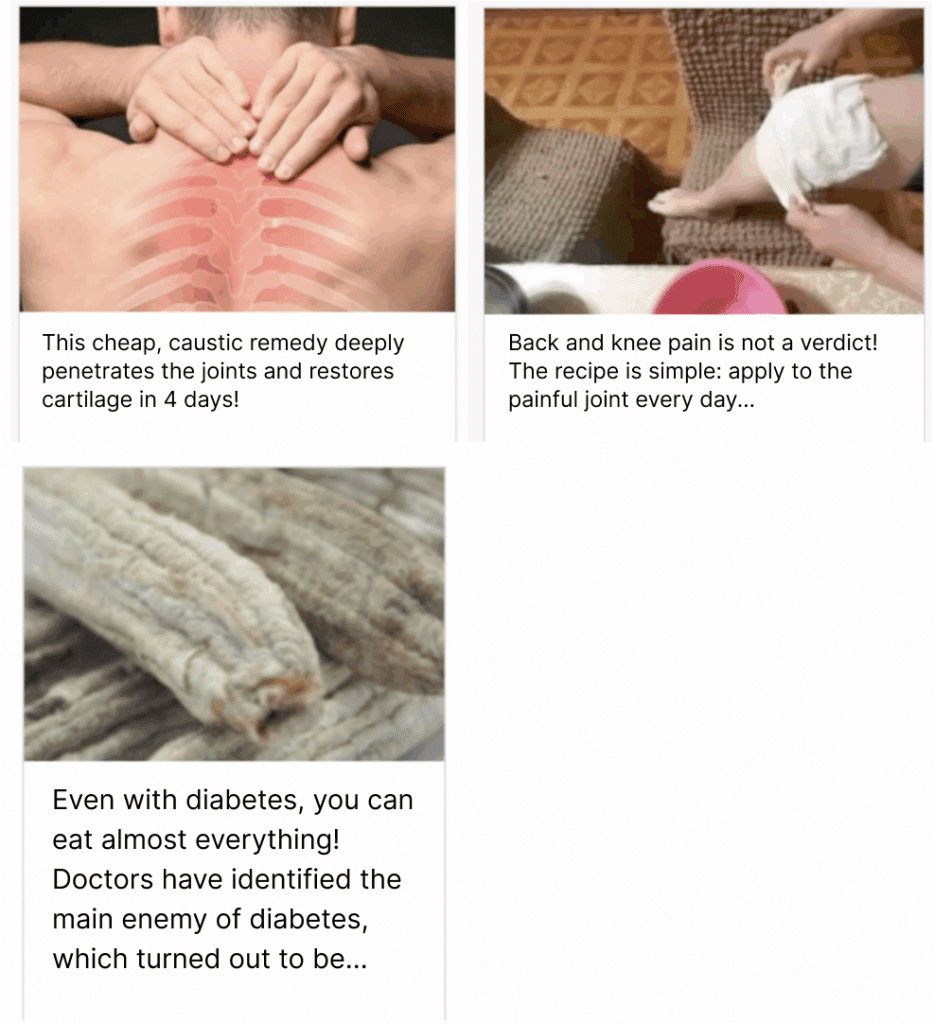
You can find examples of native advertising and specific ads yourself using spy services or simply by visiting any news site.
Finding teasers is also easy. Below, we provide successful teaser ads from our advertising network.
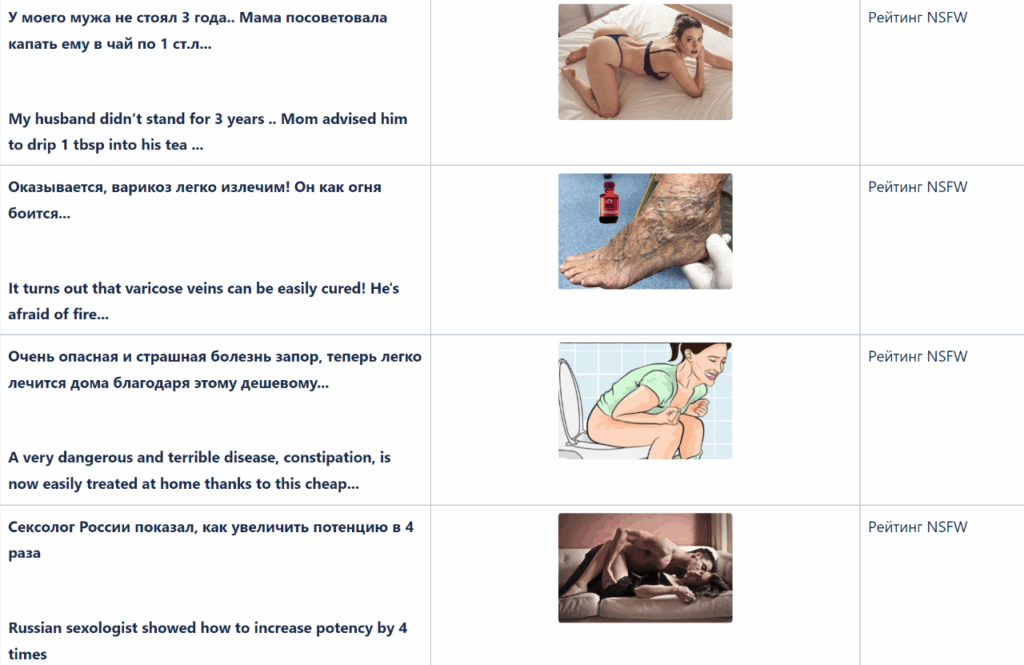

Even more examples of teaser advertising can be found on informational and news websites.
2.3. How to use creatives to increase clicks and conversions: the importance of headlines, images, and text.
Creatives are the key to the success of any advertising campaign in teaser and native ads. They help achieve high click-through rates (CTR) and conversions.
Headlines: capturing attention from the first words
A headline is the first thing a user sees. Whether they open the ad or ignore it depends on it. A good headline should be:
- Attention-grabbing. Use emotional triggers, spark interest, or create intrigue. For example: “You won’t believe what this gadget does!”
- Short and clear. Avoid complex constructions – the optimal length is 6–10 words.
- Relevant to the offer. The headline should give an idea of the product or problem being solved. Successful native ads not only integrate into general content but are also relevant to user queries.
Examples of successful teaser ad headlines: “Lose 5 kg in 2 weeks without dieting! Find out how.”, “+5 cm without surgery! 100% guarantee.”
Images
The visual part of the creative determines whether the user will read the text. Research shows that successful images increase CTR by 30–50%.
How to choose the right image:
- High quality. Avoid pixelated or too small images – they reduce trust.
- Relevance to interests. Show situations relatable to your target audience.
- Colors and contrast. Bright, high-contrast images stand out against other posts or banners.
- Face in the frame. Images of people, especially with emotional expressions (smile, surprise), work better.
Text: converting attention into action
The ad text helps develop the interest sparked by the headline and motivates action. It’s important to balance brevity and informativeness.
How to write text that converts:
- Focus on pain points and benefits. Show what problem the offer solves.
- Simple and clear phrases. Don’t complicate it; the text should be readable in 1–2 seconds.
- Call to action (CTA). For example, “Learn more,” “Get a discount,” or “Buy today and get a gift.”
- Trust elements. Mentioning promotions, guarantees, or customer reviews helps increase clickability.
Combination of elements: the perfect creative
Success depends on the synergy of all components. The headline, image, and text should complement each other and create a desire to learn more.
What is important to consider:
– Testing creatives. Create several variations (A/B tests) to identify the most successful combination.
– Adaptation to the audience. Use different approaches depending on the segment of the target audience.
– Relevance. Follow trends, study examples of teaser and native advertising to stay in context.
We will analyze what determines the cost of native and teaser advertising and how to manage the budget properly.
The main models used for both native and teaser advertising:
- CPC (Cost Per Click) – payment for each ad click. The cost of teaser ads by CPC is usually lower than that of native ads.
- CPM (Cost Per Mille) – payment per 1,000 impressions.
- CPA (Cost Per Action) – payment for a target action (registration, purchase, etc.).
It is important to consider that the cost of native advertising by CPC or CPM models may be higher due to the need to adapt content to the platform, whereas teaser advertising has lower production costs.
3.2. Factors influencing the cost: geography, niche, competition, ad format
Several key factors influence how much native advertising will cost:
- Geo. In countries with high purchasing power (e.g., the USA, Canada, Europe), the cost per click is significantly higher. At the same time, in developing markets, it may be 2-3 times lower.
- Niche. The cost of advertising heavily depends on the vertical. For example, there is currently high competition in gambling, which means advertising there will be more expensive than in another, less popular vertical. Advertising costs are also high in complex niches, such as finance.
The monthly cost of teaser advertising consists of similar components. But all other things being equal, native advertising will be more expensive due to the characteristics of the format itself.
3.3. How to reduce the cost per click and increase ROI: tips for optimizing targeting and creatives
An analytical approach to working with traffic will help reduce the cost of teaser and native advertising. Let’s look at its basics.
1. Work with basic campaign settings
- Test different geos. Find countries or regions with lower competition but sufficient purchasing power. For example, among Tier-3 countries, many show excellent results.
- Use look-alike audiences. This option allows you to find users who are similar to those who have already placed an order.
- Segment audiences by interests. Don’t waste your budget on broad targeting. The more precise the segmentation, the higher the CTR and the lower the CPC.
2. Creating creatives
- Adapt creatives to audience preferences. For example, visuals that work well in Europe may be ineffective in Asian countries.
- Apply A/B testing. Testing creatives helps select the most effective ones and save money.
- Don’t forget localization. Localizing text and images (currency, language, cultural characteristics) significantly increases user trust.
3. Funnel optimization
- Pre-landers with a strong USP. Creating thematic pre-landers that convince users of the benefits increases conversions and improves traffic quality.
- Page loading speed. Even minor delays in landing page loading can reduce conversions. Make sure pages load in less than 3 seconds.
- Analytics automation. Enabling data analysis tools simplifies the work of adjusting bids and targeting.
4. Continuous analysis and scaling
- Optimize budgets based on data. Increase bids for bundles with high ROI and reduce them for less profitable ones.
- Scale successful campaigns. If a bundle generates stable income, expand geos or increase budgets to scale results.
Effective work with these parameters allows not only to reduce the cost of native and teaser advertising but also to ensure stable ROI growth, making campaigns more profitable.
4. Native and teaser networks for arbitrage
4.1. How to choose a network for arbitrage: geo, offers, audience
What to pay attention to when choosing native and teaser networks for arbitrage:
- traffic volumes — the more, the better;
- how the network checks traffic quality, whether there are anti-fraud systems;
- what restrictions exist regarding advertised topics;
- how targeting is set up, whether there are extensive settings. A good sign is if the network segments its traffic by quality, socio-demographics, and other characteristics. In this case, it will be easy for you to find a relevant audience for the offer.
AdProfex: The Main Platform for Native and Teaser Traffic Arbitrage.
AdProfex is an advertising network offering a wide range of opportunities for working with native and teaser traffic. Here, you can buy both native and teaser traffic.
Advantages of working with AdProfex:
- Wide Audience Reach. More than 500 million unique users and over 300 million ad impressions daily.
Main regions: Europe, Asia, Latin America, and CIS countries. The traffic volume allows you to choose an audience that matches a specific offer and test different approaches without restrictions.
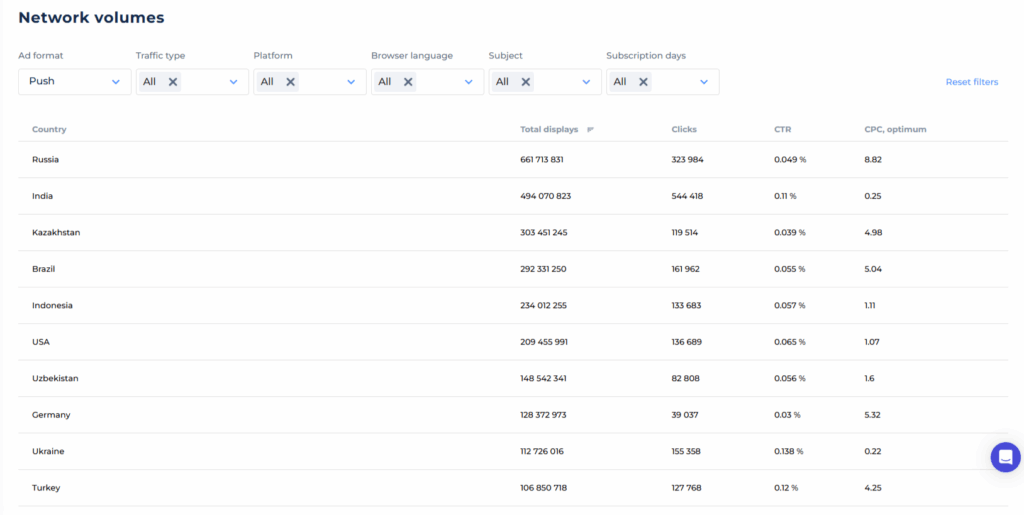
- Advanced Optimization Tools
AdProfex offers technologies that help manage bids flexibly, test hypotheses, and increase campaign profitability: micro-bidding, A/B testing, retargeting. This simplifies the process of purchasing high-quality native and teaser traffic.
- Transparency and Traffic Quality
The use of anti-fraud systems allows eliminating bot traffic, which is especially important for long-term work. The platform offers automatic compensations for invalid activity, protecting advertisers from unnecessary expenses. Not all native networks for arbitrage monitor traffic quality so meticulously.
- Accessibility for Beginners
A minimum deposit of only $30 makes the network accessible even for beginners. The simple registration process and intuitive interface allow quick campaign setup and getting started.
- Variety of Ad Formats
AdProfex supports native and teaser advertising, as well as push notifications. This enables arbitrageurs to flexibly adapt their strategies to different offers and verticals.
When setting up a push campaign in AdProfex, the following options are available in the personal account:
- Geography of impressions — allows setting up a campaign for residents of the desired regions.
- Browser language — this option enables displaying ads to users with a specific browser language, preventing ads from being shown to a non-target audience.
- Device targeting — allows sending push notifications only to mobile devices, only to PCs, or both.
- Targeting by browsers, telecom operators, operating systems — if you already have analytical data on these parameters, you can specify these targets.
- Blacklists — this option allows completely excluding impressions on sites that do not generate conversions.
- Ad scheduling — helps set a time range for ad delivery.
- Subscription age — you can select the day of the user’s push subscription, from 1 day to infinity.
- Audience and contextual segments. Audience segments allow selecting users by specific age and interests. Contextual segments help filter platforms with an audience meeting particular criteria: audience age or gender, average CR by verticals, and other targets.
- Micro bidding — enables optimizing bid amounts based on various parameters: platform, time of day, country, browser, telecom operator, device manufacturer. Pay attention to this option when looking for a teaser network for arbitrage. It can help save your budget.
Comparison of Other Popular Networks: Outbrain, Taboola, MGID, PropellerAds
Outbrain
Outbrain is one of the leading native advertising networks where you can buy native traffic.
Features:
- Specializes in native advertising.
- Works with well-known publishers, including CNN, BBC, The Guardian, and other major media outlets.
- Audience: 300 million people. The majority of traffic comes from the US and Europe.
- Many automation settings for campaigns.
- Outbrain prohibits the promotion of adult content, cryptocurrency, and some nutra offers. It also requires high-quality promotional materials without clickbait and shock content.
- Detailed reports help optimize campaigns based on the effectiveness of creatives, audience segments, and channels.
Taboola
Taboola is one of the largest platforms for native advertising. To start working with the network, you need to go through face control.
- Minimum test budget is $2,000.
- Works only with “white” offers.
- Actively used by brands looking to reach solvent users from Tier-1 and Tier-2 countries.
- Users can hide ads they don’t like, which is a disadvantage for advertisers.
- Audience: up to 1 trillion impressions per month. GEO: Primarily America and Europe, Tier-1,2. The network partners with more than 3,500 premium websites worldwide. It covers up to 95% of the online audience in the US, 89% in the UK, and about 80% in Germany and France.
- Known for strict ad moderation. All gray verticals are prohibited. Certain offers/approaches from partially white categories also face restrictions.
- Taboola is part of the Acceptable Ads program, ensuring its widgets are not blocked by most AdBlock plugins. This allows reaching almost the entire target audience without losses due to ad filters.
- Advertisers have access to a wide range of automation tools for running traffic.
MGID
MGID is an international platform for native advertising operating in more than 200 countries. It provides advertisers with access to over 1 billion unique users per month.
- Minimum budget: $100.
- Works only with “white” offers.
- Broad geographic coverage: MGID operates actively in over 200 countries, including Tier-1, Tier-2, and Tier-3 regions. USA, Canada, UK, Australia, and European countries (Tier-1), Latin America and Asia (Tier-2). Emerging markets such as India, Indonesia, and African countries (Tier-3).
- Creative formats: In addition to standard native advertising, MGID actively develops video and interactive formats to increase audience engagement.
PropellerAds
PropellerAds is a major advertising network operating in more than 220 countries, with over 1 billion impressions per day.
Features:
- Minimum budget: $100.
- Automation: An intelligent optimization system allows easy bid and audience segment management.
- Variety of formats: Here, you can buy both native and teaser traffic.
Native and teaser traffic are among the most in-demand sources in arbitrage, allowing you to get high-quality leads with proper setup. Let’s analyze how to buy them, which platforms are suitable for this, and how to correctly set up advertising campaigns.
Platforms for Buying Traffic: AdProfex, MGID, PropellerAds
The most similar advertising networks in terms of functionality and conditions are AdProfex, MGID, and PropellerAds.
AdProfex
Main advantages:
- Supports most verticals (including dating, adult, and gambling).
- Tier-3 countries are widely represented, but you can buy native and teaser traffic from other regions.
- Flexible targeting settings by geo, sociodemographics, and interests.
MGID
Main advantages:
- Audience: more than 1 billion users monthly.
- Geography: Tier 1–3 markets, including the USA, Europe, and Latin America.
- Verticals: nutra, finance, e-commerce.
- Targeting: detailed segmentation by devices, behavior, and display time.
PropellerAds
Main advantages:
- Main formats: push notifications, popunder, direct click.
- Suitable for verticals such as crypto, finance, gaming, and utilities.
The choice of platform depends on your goals, budget, and the geography of the offer. MGID is better suited for premium geos and verticals, while AdProfex and PropellerAds are the optimal choice for mass coverage in developing countries.
Ad Setup
- Choosing geo
- Determine the regions where you plan to buy native and teaser traffic. They should be relevant to your offer. For example, nutra works better in Tier 2–3 countries, where competition is lower.
- Test different countries and segments with small budgets.
- Creatives
- Native ads: focus on the value of the product. The headline should be catchy but natural.
- Teasers: use emotional images and intriguing headlines.
- Targeting
- Use behavioral targeting to reach an interested audience.
- If you are working with broad verticals, start with basic parameters (geo, devices) and gradually narrow them down based on results.
- Campaign Optimization
- Analyze data through trackers (this will significantly simplify the purchase of native and teaser traffic).
- Remove ineffective sites and increase bids on well-performing ones.
- Test different formats and elements (headlines, images, texts).
Successful arbitrage cases: examples of niches and offers.
First, let’s look at cases of arbitrage in native advertising. Below are some examples from our media buying team. This is native advertising on Thai news sites.
The first news is about drowned people.

Next is a news story about a UFO.

And the last news is about a snake that swallowed a woman. A thick snake was used in the image.

Pay attention to the selection of images. They look like a news report. Arbitrage cases in native advertising in the news segment are usually associated with negative news, as such events attract the most attention. Celebrity news is also very popular. Often, local trends emerge based on events in the country, fashion trends, and so on.
Next, let’s examine successful cases in teaser advertising. Let’s look at teasers placed on news sites.
In this case, they are used to advertise nutra offers to users. As a rule, teaser advertising uses simple images (usually taken from stock) with a greater emphasis on the headline.
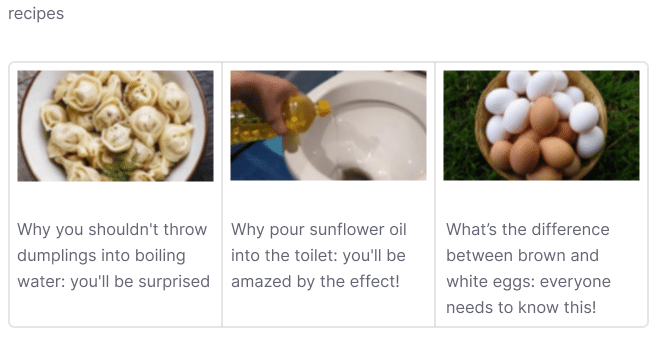
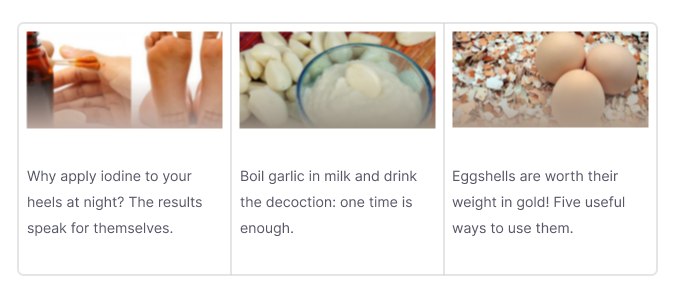
In teaser advertising, successful cases are based on a more direct approach. Native advertising, to remain in format, needs to carefully approach the problem, whereas teaser advertising addresses it at the first touch. It often provokes the user with promises they want to hear.

How to Optimize Campaigns: сreatives, targeting
Optimizing advertising campaigns is a continuous process that requires attention to detail and regular analysis. The main task is to maximize conversions and reduce user acquisition costs.
- Analysis of the results
After launching a campaign, the first step is data analysis. It is necessary to assess CTR, CR, and CPC. It is important to highlight creatives that attract the most clicks and conversions. Analyze:
- Which sources give the best result?
- Geo: where does the highest quality traffic come from?
- Creatives: which ads have a high CTR?
- Identifying converting creatives
Once you have identified successful creatives, create several more similar ones. It is also important to identify unsuccessful creatives. They should be disabled to avoid unnecessary costs on ineffective ads.
- Setting Up Blacklists and Selectives
Many arbitrage teaser networks offer functionality for optimizing traffic sources. Setting up automatic rules to block ineffective sites will help you save your budget and focus only on profitable ones. Selectives allow you to work with higher-quality traffic, optimizing purchases by sources.
A/B Testing to Increase CTR and Conversions
A/B testing is an important step in optimizing advertising campaigns. The most reliable results come from automated testing, where an intelligent algorithm monitors everything. Unfortunately, not all teaser networks offer this tool to webmasters, so it often has to be done manually. Let’s look at the A/B testing process.
- Preparing Multiple Creatives Options
First, create several versions of creatives. These can be different variations of headlines, images, text, or calls to action. If you have few ideas of your own, look at examples of successful arbitrage campaigns on the internet.
- Testing and Analysis
Launch tests with multiple options and monitor results. Identify which creative delivers the best result and continue working with it while turning off less effective options.
- Optimization Based on Test Results
Once you determine which creative variant works best, focus on improving it. But don’t forget to continue testing other variations. With each iteration, you will get more accurate data, allowing you to increase efficiency and reduce costs.
Conclusion and Call to Action
So, we have examined how to set up and where to buy native and teaser advertising, as well as how to work with these formats. To successfully use native advertising, you need to thoroughly study the characteristics of the audience and make the advertising presentation of the offer as unobtrusive as possible. For teaser advertising, you can apply more aggressive advertising approaches and fully unleash your creativity to provoke users as much as possible, but don’t overdo it and remember the moderation rules.
It’s time to test advertising formats in practice. Register at AdProfex and launch today!

